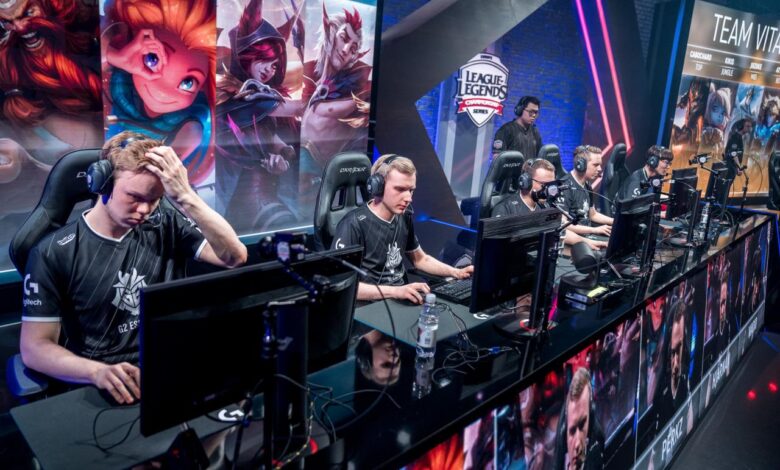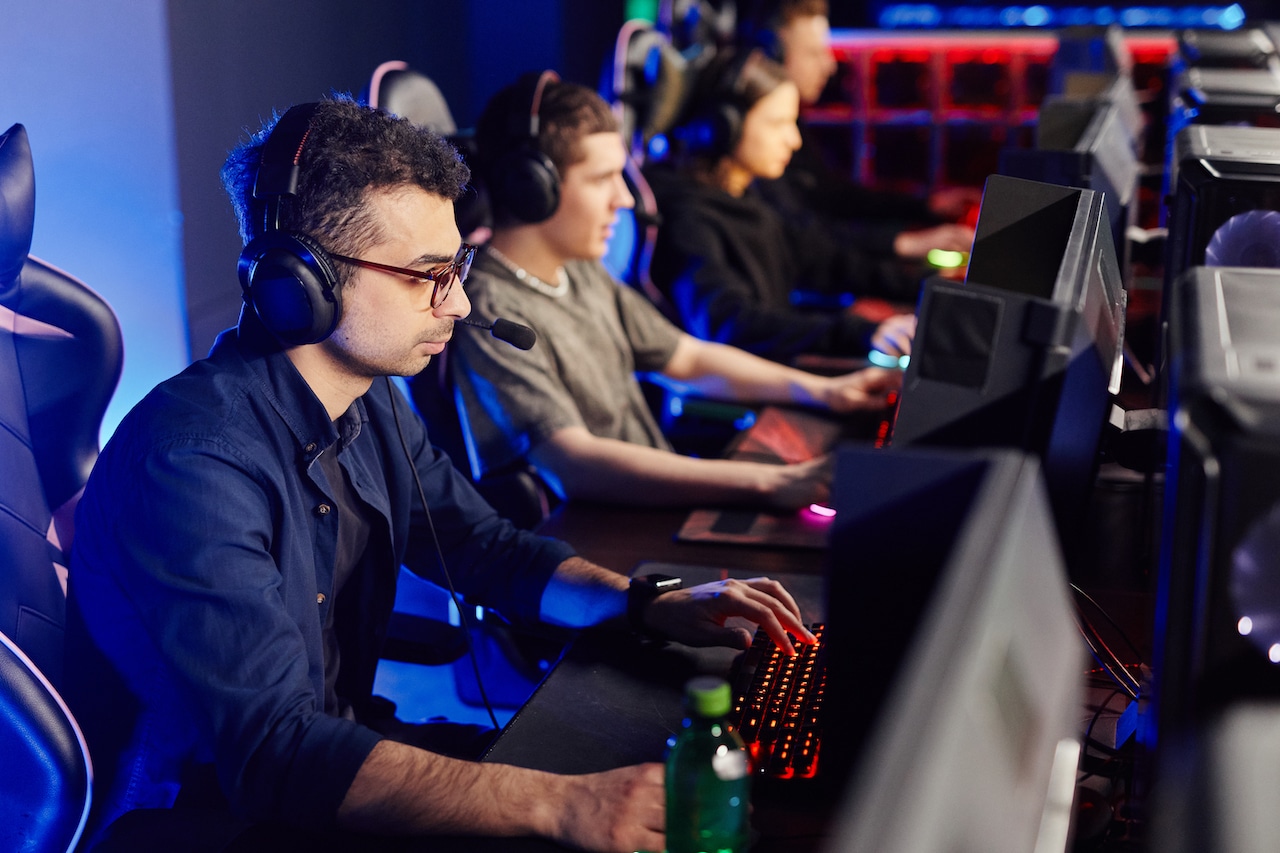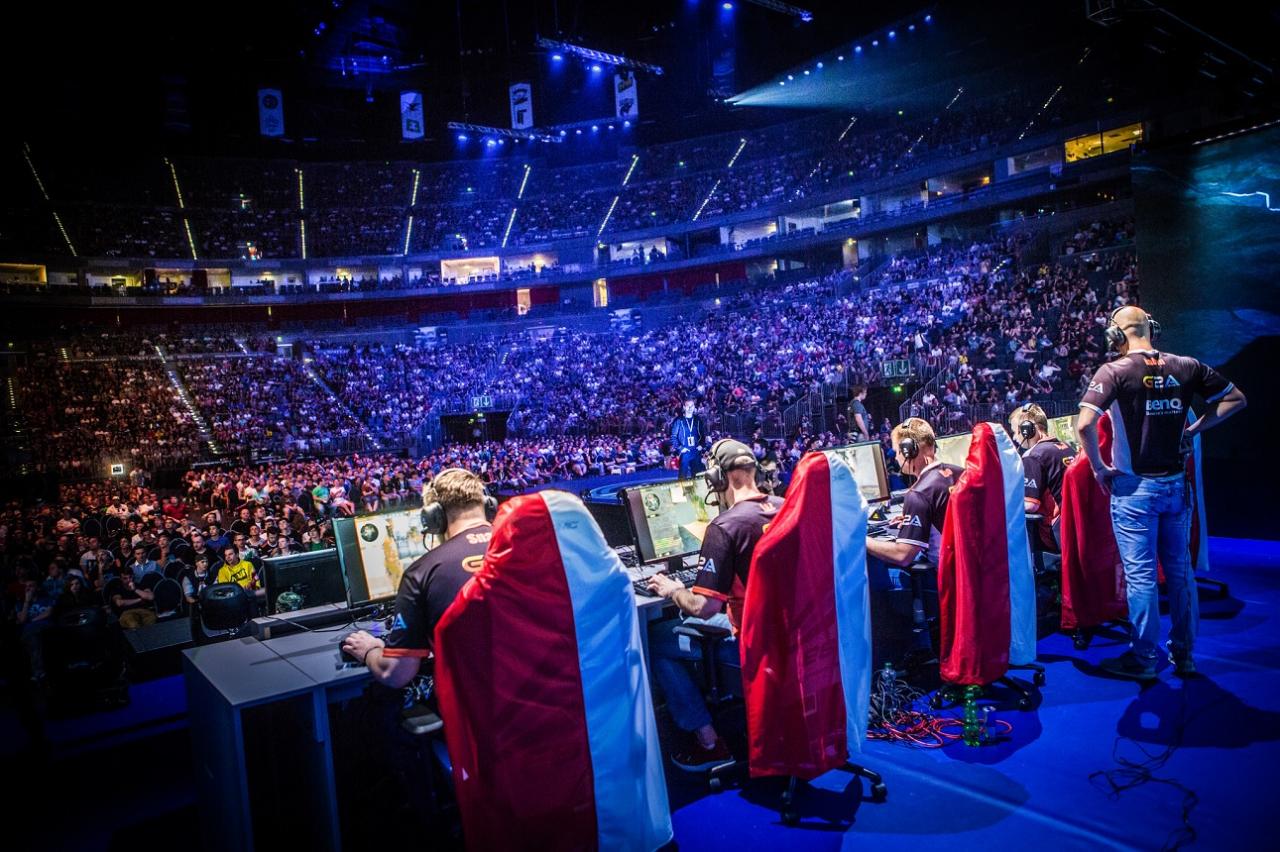The Tech Powering Esports: Beyond the Screen

Esports has exploded from a niche hobby into a global billion-dollar phenomenon, commanding stadium audiences and attracting massive investment.
What often goes unnoticed behind the cheering crowds and intense on-screen action is the sheer technological infrastructure that makes this level of competitive play possible.
We’re far beyond simple high-refresh monitors and mechanical keyboards. Today, the world of competitive gaming is driven by groundbreaking advancements in network performance, player analytics, broadcasting, and immersive viewing experiences.
The next wave of esports technology breakthroughs isn’t just about making the game look prettier; it’s about perfecting the competitive environment, making training smarter, and transforming the way millions of fans consume the sport.
This is the story of the cutting-edge tech that defines the pro-player experience, ensures fair play, and keeps the esports spectacle growing.
I. Eliminating Latency: The Unseen Battleground

In the high-stakes environment of esports, every single millisecond counts. A delay of just a few milliseconds can mean the difference between landing a game-winning headshot and a crushing defeat.
The relentless pursuit of zero-latency gaming is arguably the most critical technological arms race in the industry.
A. The Networking Backbone: From Server to Screen
Competitive play demands a dedicated, robust infrastructure that minimizes travel time for data packets.
- Dedicated Local Servers (LAN): While online play is common, major tournaments often rely on Local Area Network (LAN) setups. This ensures that the physical distance the data must travel is measured in meters, not thousands of kilometers, virtually eliminating network latency caused by the internet. The entire setup is isolated from public networks, guaranteeing stability and speed.
- Edge Computing for Online Leagues: For global online leagues, the industry is increasingly leveraging Edge Computing. This means placing game servers closer to population centers and major player hubs, reducing the geographical distance (and thus the latency) between the player and the server. This provides a more consistent, low-lag experience for regional matches.
- Advanced Network Prioritization: Tournament networks employ sophisticated quality-of-service (QoS) protocols. These systems ensure that game data packets receive absolute priority over all other traffic (like spectator streams or background downloads), guaranteeing the player’s interaction with the server is instantaneous.
B. Input Lag: The Display and Peripheral Revolution
Network lag is only half the fight. The time it takes for a player’s physical input (a mouse click or keypress) to translate into an on-screen action (display output) is equally crucial.
- Ultra-High Refresh Rate Monitors: The industry standard for competitive monitors has rapidly increased. While 144Hz was once the pinnacle, most pro players now use 240Hz, 360Hz, or even 540Hz displays. This allows the game to display new information more frequently, ensuring the player sees critical updates sooner.
- End-to-End Latency Measurement: Companies like NVIDIA have developed systems (e.g., Reflex) that measure and optimize latency across the entire chain: from the mouse click, through the PC, to the GPU rendering, and finally to the display. This optimization software works with peripherals and GPUs to dynamically reduce render queue pressure, lowering overall system latency.
- Input Device Innovation: Pro-level peripherals feature extremely high polling rates (often 8000Hz), meaning the mouse or keyboard reports its position or state to the PC 8,000 times per second. This minute increase in responsiveness contributes to the feeling of instantaneous control, giving pros the confidence to execute complex maneuvers.
II. The Data Advantage: AI, Coaching, and Analytics
The days of relying solely on intuition and raw talent are over. Modern esports teams treat data like gold, using sophisticated analytics and AI tools to gain a competitive edge in training and drafting.
A. Performance and Scouting Analytics
Teams now employ data analysts who track everything imaginable about individual players and opponents.
- Advanced Player Tracking: Software tracks dozens of metrics per second, including mouse movement velocity, reaction time to specific stimuli, camera swivels, and keypress timing. This data provides objective insights into a player’s consistency and identifies subtle mechanical weaknesses or strengths.
- Opponent Modeling (Scouting): AI algorithms analyze thousands of historical matches of an opposing team or player.
- A. The AI identifies tendencies and patterns, such as preferred map routes, common economic decisions (in strategy games), or signature character bans/picks (in MOBA/FPS).
- B. It creates predictive models that estimate the probability of certain actions under specific game states, giving coaches a significant strategic advantage during the match preparation phase.
B. AI-Powered Coaching and Training
AI is increasingly stepping into the training room, offering personalized feedback that human coaches might miss.
- Instant Replay and Error Isolation: AI systems can automatically review a player’s practice match and instantly isolate moments where a critical error occurred—such as poor positioning, delayed ability use, or inaccurate resource management. This allows players to review and correct mistakes much faster than traditional manual review.
- Personalized Drills: The AI creates custom training scenarios tailored to a player’s identified weaknesses. If a player struggles with high-pressure clutch situations, the AI can generate endless drills focused precisely on those scenarios until mastery is achieved.
- Strategic Simulation: For games like StarCraft or Dota 2, complex AI can simulate thousands of possible mid-game scenarios, allowing coaches to test out high-level strategic responses against the most optimal play, essentially running highly controlled, complex “what-if” scenarios before a tournament.
III. The Spectator Experience: Immersive Broadcasting

Esports’ growth is fueled by its massive global audience. Technology is constantly enhancing the viewing experience, making complex games understandable and the action more dramatic.
A. Real-Time Data Visualization
Broadcasts are moving beyond simple score overlays to complex, dynamic data presentations.
- Live Game State Overlays: Broadcast software pulls data directly from the game client to create elegant, real-time visualizations. This includes team net worth graphs, health bar differences, heat maps of player activity, and projected win probability percentages, all updating as the action unfolds. This makes complex strategic concepts digestible for casual viewers.
- AR/VR Enhanced Broadcasts: For major events, Augmented Reality (AR) is used heavily. Imagine a virtual dragon appearing to fly across the physical stage or a giant hologram of a player’s avatar standing in the arena. This blends the digital and physical event space, adding a layer of spectacular visual drama for both the live and remote audience.
- Multi-View Streaming Platforms: Platforms are developing technologies that allow viewers to switch seamlessly between different camera angles, player perspectives, or commentators. This gives fans the power to tailor the broadcast to their own preferences, whether they want the tactical view or the first-person perspective of their favorite star.
B. High-Fidelity Audio and Crowd Engagement
Sound quality and atmosphere are paramount to the spectator experience.
- Isolated Player Comms: Advanced microphone technology and noise-cancellation systems ensure that the chaotic crowd noise doesn’t interfere with the players’ ability to communicate. Paradoxically, broadcasters often use highly directional microphones to capture the players’ vocal reactions at key moments, adding human drama to the broadcast (while maintaining strict privacy protocols for actual strategy calls).
- 4K/8K HDR Streaming: To showcase the highly detailed, fast-paced action, broadcasts are pushing the limits of streaming resolution and dynamic range (HDR). This requires substantial investment in studio cameras, encoding hardware, and streaming distribution networks to ensure millions can watch flawlessly.
IV. Ensuring Integrity: The Fight Against Cheating
As the stakes and prize pools grow, the threat of cheating—both hardware and software-based—becomes more significant. Technology is the primary defense mechanism ensuring the integrity of competitive esports.
A. Anti-Cheat Software and Biometrics
Tournament organizers deploy sophisticated, multi-layered defenses to maintain fair play.
- Kernel-Level Anti-Cheat: Modern anti-cheat solutions operate at the kernel level of the operating system, giving them deep access to monitor software and detect malicious code attempting to interact with the game. These tools are constantly updated via machine learning to identify new cheating patterns.
- Hardware Fingerprinting: Tournament organizers track the unique digital “fingerprint” of every piece of hardware used by a player (CPU, GPU, network adapter). This ensures that banned players cannot simply use a new account; the banned hardware remains flagged and blocked from tournament systems.
- Biometric Authentication: In high-stakes events, systems are being explored that use facial recognition or fingerprint scanning to verify a player’s identity before they can log into their competitive account, preventing account sharing or the use of substitutes.
B. Standardized Hardware and Secure Environments
Controlling the physical environment eliminates avenues for hardware manipulation.
- Strictly Standardized Peripherals: Players must typically use verified peripherals provided or checked by the tournament organizer. This prevents the use of custom hardware that might contain built-in macros or scripts (known as “hardware cheats”).
- Air-Gapped Systems: Tournament PCs are often air-gapped, meaning they are physically isolated from all outside networks, except the dedicated LAN, preventing any external software installation or communication during the match.
- Delay in Spectator Feeds: All official broadcast feeds typically include a short time delay (ranging from a few seconds to a few minutes). This simple technological measure prevents teams or external viewers from relaying real-time information back to players, safeguarding against “ghosting” or external interference.
V. The Future Wave: Immersive and Cloud Esports
The next five years will see major structural changes driven by the convergence of cloud computing and immersive technologies.
A. Cloud Gaming and Hardware Equalization
The move toward cloud platforms could fundamentally change the economic and technical requirements of esports.
- Equalized Performance: When games are streamed via a service like Xbox Cloud Gaming or NVIDIA GeForce NOW, the powerful, rendering hardware is located remotely in the cloud. This means that every player, regardless of their local machine’s age or price, receives the exact same, top-tier performance. This equalizes the hardware playing field, ensuring skill is the only variable.
- Simplified Setup: Cloud infrastructure simplifies tournament logistics. Organizers could potentially bypass the need to transport and set up hundreds of high-end gaming rigs, relying instead on secure, thin client terminals connected to a central cloud server.
B. The Rise of Virtual and AR Spectating
Immersive technologies are poised to turn passive viewing into an interactive, spatial experience.
- VR Command Centers: Imagine watching a MOBA match not on a flat screen, but in a custom-built VR environment. Viewers could stand on a giant map floating in the arena, manipulate data overlays with their hands, and seamlessly jump between player perspectives in a spatial way, transforming the analysis process into a personal command center experience.
- AR-Driven Local Events: At live arenas, AR technology could allow fans using special apps or glasses to view player stats, real-time mini-maps, or sponsor logos floating above the physical stage, making the live experience richer and more informative.
Conclusion
The evolution of esports from competitive gaming to a global sport hinges entirely on the continuous advancement of technology. The breakthroughs in 2025 and beyond are not incremental improvements; they represent a fundamental restructuring of the competitive environment.
The pursuit of ultra-low latency—across network, system, and display—is the bedrock of integrity, ensuring that a player’s pure mechanical skill, not their internet connection or hardware budget, determines the outcome. Meanwhile, AI-powered analytics are transforming coaching and training from an art into a precise science, creating smarter players and deeper strategic narratives that engage the audience. Furthermore, the integration of Augmented Reality and advanced data visualization is making the spectacle more immersive, accessible, and visually stunning for millions of viewers worldwide.
The technological ecosystem surrounding esports is now a complex, multi-layered machine designed to achieve a singular goal: perfect competitive fairness and maximal entertainment value. The future promises an even deeper integration of Cloud Computing, which will democratize the high-performance playing field, and Immersive Reality (VR/AR), which will revolutionize fan engagement. The Engine that powers esports is no longer a simple game client; it is a sophisticated, global platform engineered to deliver instant interaction, objective performance measurement, and a broadcast experience that rivals traditional sports. This continuous innovation is the invisible fuel ensuring the esports rocket maintains its steep trajectory into the future.